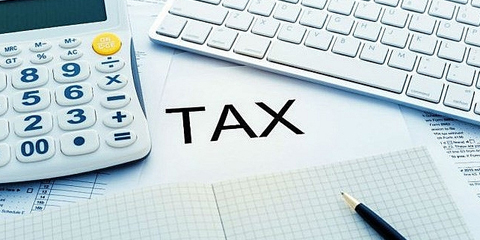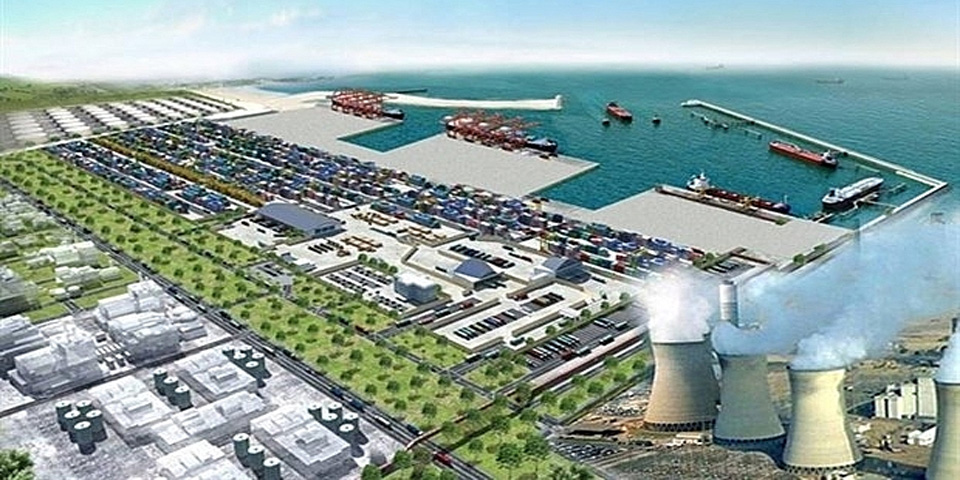Want to be in the loop?
subscribe to
our notification
Business News
2011 SOCIAL - ECONOMIC STATISTICAL DATA
Of the economy’s 5.89% general pace, the agriculture, forestry and fishery rose 4%, contributed 0.66 point percent; the industry and construction rose 5.53%, contributed 2.32 points percent and the service rose 6.99%, contributed 2.91 points percent.
+ Gross Domestic Products at current prices
+ Gross Domestic Products at 1994 constant prices
1.2. Agriculture, forestry and fishery
This year’s production value of this sector at 1994 constant prices was estimated rising 5.2% from 2010, of which agriculture rose 4.8%; forest 5.7% and fishery 6.1%.
a. Agriculture
Rice yield in 2011 was estimated achieving 42.3 million tons, rose 2.3 million tons from 2010, it was the highest pace since past ten years. Of which, the yield achieved 19.8 million tons for spring rice, rose 561,500 tons; 13.3 million tons for summer rice, up 1.6 million tons; and 9.2 million tons for winter rice, up 102,400 tons. If 4.6 million tons of maize were added, this year’s total grain food production was estimated achieving nearly 47 million tons, up 2.3 million tons from 2010.
Perennial industrial and fruit crops continued to develop. This year’s production of several crops was estimated to increase much from 2010: tea 6.5%, coffee 5%; rubber 8%; pepper 3.8%; coconut 2.3%; pineapple 4%; banana 2%; mango 2.7%; grapefruit 4.3%; longan 7.4%; lichi, rambutan 33.4%.
As of 01/10/2011, the country had 27.1 million pigs, down 1.2%; 2,712,000 buffalos, down 5.7%; 5,436,600 oxen, down 6.4% (only the number of cows was 142,700, up 14,000); 322.6 million fowls, up 7.3% from the same period last year. Yield of live-wight meat of all kinds was estimated achieving 4,170,000 tons, up 3.7% from 2010, of which buffalo meat rose 5%, ox meat 3%; pork 2.1%; poultry meat 13.1%.
b. Forestry
Forest area under cultivation in 2011 achieved 547,000 ha, rose 3.7%; area of reforestation was 942,000 ha, rose 4.2%; dispersed planted trees were 169 million, up 0.4%; exploited wood production was 4,692,000 m3, up 17% (only wood used as material for paper manufacturing achieved 2,200,000 m3); exploited firewood was 26.6 million ste., up 3.5% from 2010. Total damaged forest area in 2011 was 3,515 ha, equaling 45.2% of that in 2010, of which fired area was 1,598 ha, equaling 23.8%; destroyed area was 1,917 ha, up 81.3% from 2010.
c. Fishery
2011’ fishing production was estimated reaching 5,432,900 tons, up 5.6% from 2010, of which there were 4,050,500 tons of fish, up 5.6%; 632,900 tons of shrimp, up 6.8%. Aquaculture production reached 2,930,400 tons, up 7.4% from 2010, of which there were 2,258,600 tons of fish, up 7.5%; and 482,200 tons of shrimp, up 7.2%. Catching production reached 2,502,500 tons, up 3.6% from last year, of which sea exploitation reached 2,300,000 tons, up 3.6%; domestic exploitation gained 202,500 tons, up 4.2%. Particularly, tuna production rose highly, reaching 10,500 tons, up 12.5% from 2010.
+ Progression of cultivated crops as of December 15, 2011
+ Production value of agriculture, forestry & fishery at 1994 constant prices
+ Cultivated area, productivity and yield of main crops
+ Cultivated area, productivity and yield of annually industrial crops
+ Cultivated area, productivity and yield of perennial industrial crops
+ Husbandry as of 1/10
+ Output of forest production
+ Fishing production
1.3. Industry
2011’s industrial production index (IPI) rose 6,8% from 2010, of which mining and quarrying reduced 0.1%; manufacturing rose 9.5%; power, gas, water supply rose 10%.
Consumption indexes for processed and manufactured products in 11 months of 2011 rose 15% from the same period last year. In-stock indexes of the processing and manufacturing sector as of 01/12/2011 rose 23% from last year ‘same period.
+ Industrial production index
+ Main industrial products
1.4. Service
a. Total retailed sales of consumer goods and services
As estimated, 2011’s total retailed sales of consumer goods and services reaches 2,004.4 trillion dongs, rose 24.2% from 2010, if the factor of high price was excluded the growth was 4.7%. Of the total, trade business reached 1,578.2 trillion dongs, accounted for 78.8% and rose 24.1% from last year; hotel and restaurant: 227 trillion dongs, 11.3% and 27.4%; service: 181 trillion dongs, 9.0% and 22.1%; Tourist: 18.2 trillion dongs, 0.9% and 12.2% respectively.
+ Total retail sales of consumer goods and services
b. Carriage of passengers and cargos
2011’s passenger carriage was estimated increasing 14.6% by volume carried and 11.9% by volume traffic carried from 2010, of which land transport rose 15.1% and 12.6%; river 9.9% and 15%; airway 11% and 9.7%; sea 1.9% and 3.1%; rail 3.5% and 4.4% respectively.
As estimated, cargo transport in 2011 rose 12.1% by tons and reduced 2.2% by tons-kilometers from 2010, of which the domestic transport increased by 12.7% and 6.3% respectively; the oversea transport rose 4.3% by tons and reduced 6.9% by tons-kilometers. The land transport rose 13% by tons and 11.2% by tons-kilometers; the river was up 12.2% and 15.6% respectively; the sea was up 5% by tons but down 6.8% by tons-kilometers; the rail was down 8.2% by tons and up 3.5% by tons-kilometers.
+ Passengers, volume carried and volume traffic carried
+ Cargo, volume carried and volume traffic carried
c. Postal and communication services
The number of new telephone subscribers in 2011 reached 11.8 million, slowed down 12.9% from 2010, including 49,600 desk telephone subscribers, reduced 76.1% and 11.8 million mobile phone subscribers, reduced 11.9%. The number of telephone subscribers over the country as at the end of 12/2011 was estimated to reach 133.1 million, rose 3.9% from last year ‘same period, including 15.5 million desk telephone subscribers, up 0.1% and 117.6 million mobile phone subscribers, up 4.4%.
The number of internet subscribers over the country as at the end of 12/2011 was estimated reaching 4.2 million, up 16.1% from last year’ same period. The number of internet users as of the end of 12/2011 reached 32.6 million, up 22% from last year’ same period. 2011’s total postal and communicational service net income was estimated to reach 167.1 trillion dongs, up 19.3% from 2010.
d. International visitors to Viet Nam
International visitors to Vietnam in 2011 were estimated to reach 6,014,000, up 19.1% from 2010. Of which, visitors coming for tourist purposes were 3,651,300, up 17.4%; for business purposes 1,003,000, down 2%; for visiting relatives 1,007,300, up 75.5%.
+ International visitors to Vietnam
II. STABILISE MACROECONOMY AND CURB INFLATION
2.1. Construction, investment and development
2011’s construction value at current prices reached 676.4 trillion dongs, of which the state sector gained 119.6 trillion dongs; the non-state sector 529.4 trillion dongs and the FDI sector 27.4 trillion dongs.
2011’s social realized investment capital at current prices was estimated reaching 877.9 trillion dongs, up 5.7% from 2010 and equaling 34.6% of GDP (If the price rising factor were excluded, it was equal to 90.6% from 2010), of which the state sector gained 341.6 trillion dongs, accounted for 38.9% and up 8%; the non-state sector 309.4 trillion dongs, accounted for 35.2% and up 3,3%; the FDI sector 226.9 trillion dongs, accounted for 25.9% and up 5.8% from last year.
2011’s realized investment under the state budget was estimated to reach 178 trillion dongs, equaling 101.8% of the yearly plan and up 6.7% from 2010, of which capital under central management was 42 trillion dongs, equaling100.4% of the yearly estimate and up 7.1%; capital under local management was 136 trillion dongs, equaling102.3% of the yearly plan and up 6.5%.
+ Realized development investments under State Budget
2.2. Finance
2011’s total Government revenues were estimated to reach 674.5 trillion dongs, equaling 113.4% of the yearly estimate and up 20.6% from 2010 (The goal said in the Government’s Resolution No 11 was to increase Government revenues by 7-8%). 2011’s total Government expenditures were estimated to reach 796 trillion dongs. Government’s overspending was equal to 4.9% of GDP (the set goal was 5.3%).
2011’s total means of payment rose 10% from 12/2010 (the Plan was 15-16%); total credit debts rose 12% (the Plan was below 20%).
2.3. Exports and imports
a. Exports
2011’s total export turnovers were estimated reaching USD 96.3 billion, rose 33.3% from 2010, of which the domestic economic sector achieved USD 41.8 billion, up 26.1% and the FDI sector (including crude oil) gained USD 54.5 billion, up 39.3%. If crude oil was excluded the FDI sector gained USD 47.2 billion, up 38.4% from last year.
In 2011, 14 exported items had turnovers of over USD 2 billion[1].
+ Exports
b. Imports
2011’s total import turnovers were estimated to reach USD 105.8 billion, rose 24.7% from last year, of which the domestic economic sector achieved USD 58 billion, up 21.2% and the FDI sector gained USD 47.8 billion, up 29.2%. This was mainly due to imported machinery and material for domestic production.
The FDI sector has taken a great part in this year’s increase in export-import turnovers with 39.3% pace for export and 29.2% pace for import. This sector’s export turnovers (including crude oil) accounted for 56.6% of the country’s total export turnovers ; and its import turnovers accounted for 45.2% of the country’s total import turnovers.
2011’s trade deficit was estimated to reach USD 9.5 billion, equaling 9.9% of total export turnovers. This was the lowest rate since past 5 year and 2011 was a year with lowest trade deficit rate against export turnovers since 2002.
+ Imports
c. Exported and imported services
2011’s turnovers of exported services were estimated reaching USD 8,879 million, up 19% from 2010, of which the tourist service gained USD 5,620 million, up 26,3%; the transport service USD 2,505 million, up 8.7%. 2011’s turnovers of imported services were estimated reaching USD 11,859 million, up 19.5% from 2010, of which the transport service gained USD 8,226 million, up 24.7%; the tourist service USD 1,710 million, up 16.3%. 2011’s trade gap of services was USD 2,980 million, up 21.1% from 2010 and equaling 33.6% of 2011’s turnovers of exported services.
2.4. Price indexes
a. Consumer Price Indexes (CPI)
December’s CPI rose 0.53% from November (it was much lower than 1.38% and 1.98% paces of the same period in 2009 and 2010), of which groups of items and services with higher CPIs than the general were textile, hats, footgear up 0.86%; catering and related services up 0.69% (grain food was up 1.0%; foodstuff up 0.49%); family appliances up 0.68%. groups of items and services with lower CPIs than the general were housing and construction material up 0.51%; drinks and tobacco up 0.49%; culture, entertainment and tourist up 0.35%; medicines and health service up 0.24%; transport up 0.16%; education up 0.05%; only postal and communication services reduced 0.09%. CPI in 12/2011 rose 18.13 percent from 12/2010. 2011’s average CPI rose 18.58% from that in 2010.
December’s gold price reduced 0.97% from November; rose 24.09% from the same period in 2010. December’s USD price rose 0.02% from November and 2.24% from the same period in 2010.
+ Consumer price indexes, gold & USD price indexes, December 2011
b. Producer price indexes (PPI) and export-import price indexes
In 2011, PPIs for agricultural, forestry and fishing products rose 31.8%; PPIs for industrial products rose 18.43%; Price indexes for raw material used for production were up 21.27%; transport charge indexes rose 18.52%. Price indexes for exports rose 19.62% and price indexes for imports rose 20.18% from 2010.
+ Producers’ price indexes for industrial products In 4th Quarter of 2011
+ Producers’ price indexes for agricultural, forestry and fishing Products in 4th Quarter of 2011
+ Price indexes of materials used for production 4th Quarter of 2011
+ Export price indexes in 4th Quarter of 2011
+ Import price indexes, 4th Quarter of 2011
+ Transport charge indexes, 4th Quarter of 2011
III. SOCIAL ISSUES
3.1. Population, labor and employment
As estimated, the country’s average population in 2011 was 87.84 million, up 1.04% from 2010, of which 43.47 million were men, accounted for 49.5% of the total population and rose 1.1%; 44.37 million were women, accounted for 50.5% of the total population and rose 0.99%. Urban population were 26.88 million, accounted for 30.6% of the total population and rose 2.5%; rural population were 60.96 million, accounted for 69.4% of the total population and rose 0.41% from 2010.
The labor force aged 15 and above in 2011 had 51.39 million persons, rose 1.97% from 2010. 46.48 million People were within the labor age group, up 0.12%. Labor proportion in the sector of agriculture, forestry and fishery decreased from 48.7% in 2010 to 48.0% in 2011; it rose from 21.7% to 22.4% respectively in the sector of industry and construction; and in the service sector, it maintained to be 29.6%.
The unemployment rate within the labor age group in 2011 was 2.27%, of which it was 3.6% for urban area and 1.71% for rural area (in 2010, corresponding rates were 2.88%, 4.29% and 2.30%). The underemployment rate within the labor age group in 2011was 3.34%, of which it was 1.82% for urban area and 3.96% for rural area (in 2010, corresponding rates were 3.57%, 1.82% and 4,26%).
3.2. People’s life and social security
Between-crop hunger reduced 21.7% by households and 14.6% by persons from 2010.
The Party, State and Government have paid great attention to social security and poverty reduction. In 2011, The Government allocated 2,740 billion dongs of the investment development fund and 550 billion dongs of the public service fund to 62 poor districts over the country. Acted upon the Government Resolution No 80/NQ-CP dated 19/5/2011 on orienting to sustainable reduction of poverty for period 2011-2020, over 500,000 poor households have been borrowed favorable credits; 14 million poor persons have been provided with health insurance cards; 2.5 million poor pupils have been exempted from and reduced their school fees; 20,000 poor households have been supported with housing. According to preliminary reports from 54 provinces/cities under central management, total budget used for social security and poverty reduction in 2011 was 3,213 billion dongs, of which 1,269 billion dongs were for supporting persons under policy; 988 billion dongs for supporting poor households and 956 billion dongs for food aid and other social aids.
3.3. Education and training
As of end of 2011, the country had 57/63 provinces/cities under central management met standards for popularizing primary education within right age group and 63/63 provinces and cities met standards for popularizing junior secondary education. Schools meeting national standard in 2010-2011school-year rose 20.6% for pre-schooling level; 11.5% for primary schooling level; 22.3% for junior secondary schooling level and 24.3% for senior secondary schooling level from last school-year. The number of teachers for 2010-2011school-year was 830,900, rose by 12,000 teachers from last school-year. The rate of teachers meeting national standard was 97.6% for primary schooling level; 97.4% junior secondary schooling level and 99.0% for senior secondary schooling level.
About occupational training: As of end of 2011, the country had 128 occupational colleges; 308 intermediate vocational schools; 908 vocational centers and over 1,000 other vocational establishments. This year’s newly recruited apprentice students were 1,860,000 times of persons rose 6.4% from last year, of which occupational colleges and intermediate vocational schools recruited 420,000 times of persons; vocational primary schools recruited 1,440,000 times of persons.
3.4. Epidemic diseases and food poisoning
Since beginning of the year, the country had 65,500 cases of hemorrhagic fever (56 died); 9,300 cases of virus hepatitis; 995 cases of virus encephalitis (21 died); 664 cases of typhoid; 767 cases of A H1N1 (17 died); 106,500 cases of foot, hand and mouth disease (162 died); 4,800 persons poisoned (17 died). As of mid-December 2011, the country had 248,600 cases infected with HIV, of which 100,800 persons turned to AIDS and nearly 52,000 persons died of AIDS.
3.5. Culture and sport
In 2011, the publishing sector published 20,400 book titles with nearly 267 million copies (rose 10% by book titles and 3% by copies from last year) and 26 million cultural products.
Vietnam achieved 297 gold medals, 228 silver medals and 248 bronze medals in international sport games. Notably, in 26th Sea Games, the Vietnam team achieved 96 gold medals, 92 silver medals and 100 bronze medals, ranking 3rd in the final list of medals. In ASEAN Para Games, the Vietnam team ranked 4th with 44 gold medals, 44 silver medals and72 bronze medals.
3.6. Traffic accidents
In 11 months of this year, the country had 12,100 cases of traffic accident, killing 10,100 persons and injuring 9,300 others. As compared to the same period in 2010, cases of traffic accident decreased by 2.9%, the death by 2,5% but the wounded rose 2.9%. On average, each day in 11 months, the country had 36 cases of traffic accident, killing 30 persons and injuring 28 others.
3.7. Natural calamity
Natural calamity occurred 2011 made 257 persons died and gone missing, 267 persons injured; nearly 1,200 houses collapsed and swept away; 391,800 houses inundated and damaged; over 760 kilometers of dykes and more than 680 kilometers of roads broken; 867 electric poles collapsed; nearly 54,000 ha of rice and vegetables suffered empty loss; over 330,000 ha of rice and vegetables flooded and damaged. Total losses caused by natural calamity were estimated at over 10 billion dongs./.
GENERAL STATISTICS OFFICE
Related News

GREEN ECONOMY, DIGITAL ECONOMY BREAKTHROUGH OF VIETNAM-CHINA TIES: PM
Addressing a Hanoi seminar with 19 Chinese groups operating in green economy and digital economy, the leader said the meeting, the first of its kind, aims to materialise high-level perceptions reached by Party General Secretary Nguyen Phu Trong and Party General Secretary and President of China Xi Jinping, who agreed to build the Vietnam-China community with a shared future.

CONSUMER CONFIDENCE IN ECONOMIC RECOVERY REACHES FIVE-QUARTER HIGH
Vietnam's GDP expanded by a healthy 5.66 per cent in the first quarter of 2024, marking the strongest first-quarter growth since 2020. While slower than the previous quarter's 6.7 per cent growth, this momentum indicates the country is on track to achieve its 2024 economic targets.

THE VIET NAM IMPORT-EXPORT REPORT TO BE RELEASED THURSDAY
In particular, it includes an itemised import and export report, in specific markets and also includes an overview of all State management activities and policy mechanisms related to the import, export market along with details of all the legal documents issued in the year.

TAX AND FEE SUPPORT HINGES ON MPI PROPOSAL APPROVAL
“Business and production activities of enterprises remain in big difficulties. Domestic purchasing power has reduced and people are tightening their belts,” the MPI stated. “Demands in the domestic market are still standing at a low level, while manufacturing and processing enterprises have low competition. These are among the biggest difficulties.”

VIETNAM’S TEXTILE SECTOR BRINGS IN $37 BILLION IN FDI
The foreign-invested enterprises play an important role in the textile and garment sector, contributing 65 per cent to the sector’s total export turnover. Major investors mainly come from South Korea, Taiwan, Hong Kong, and China. Among them, South Korea is the largest foreign investor in Vietnam’s textile and garment sector.

FDI FLOWS STRONGLY INTO MANUFACTURING, REAL ESTATE
According to the General Statistics Office (GSO), the total FDI disbursed in Vietnam in the first four months of this year reached an estimated 6.28 billion USD, up 7.4 per cent year on year, the highest four-month amount in the past five years.

































